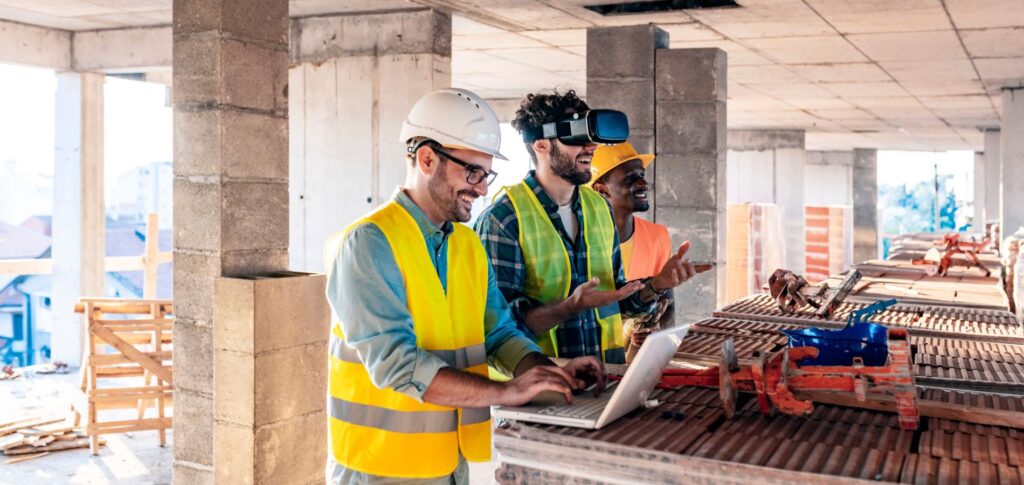Efficient housebuilding has been a long-standing issue in the UK, with a shortage of affordable homes being a key concern. While the country is facing a severe housing crisis, technology has the potential to bring a new era of innovation and productivity to the industry. In this blog post, we’ll explore some of the new tools and techniques that housebuilders in the UK can use to streamline their construction processes and build more homes faster and more efficiently.

Offsite Construction
Offsite construction is a building method that involves the production of building components offsite in a factory environment, followed by the assembly of these components on the construction site. This approach can help to speed up construction times, reduce on-site waste and improve quality control.
Offsite construction has been around for a while, but the technology behind it has improved significantly in recent years. For example, the use of Building Information Modelling (BIM) has enabled offsite manufacturers to create highly accurate 3D models of building components, which can be used to identify any potential issues before they arise on-site. This can help to avoid costly delays and rework, as well as improve safety on the construction site.
Drones
Drones are increasingly being used in the construction industry to conduct surveys, monitor construction progress and improve site safety. They can capture highly accurate aerial images and videos of construction sites, which can be used to create 3D models of the site and monitor progress over time.
In addition, drones can be used to conduct thermal imaging surveys, which can identify potential issues with insulation, damp or other structural problems. This can help to improve energy efficiency and reduce the risk of costly repairs later on.
Augmented Reality (AR) and Virtual Reality (VR)
AR and VR technologies can help housebuilders to visualise designs and construction processes in a highly immersive way. For example, AR can be used to overlay digital images onto real-world objects, allowing builders to visualise how a building will look in its intended environment. VR can be used to create highly realistic virtual environments, which can be used to simulate construction processes and identify any potential issues before they arise on-site.
AR and VR can also be used to improve safety on construction sites. For example, VR can be used to create realistic simulations of hazardous scenarios, which can be used to train workers and improve safety awareness.
Robotics
Robots are increasingly being used in the construction industry to automate repetitive tasks and improve productivity. For example, bricklaying robots can lay bricks much faster and more accurately than human bricklayers, while autonomous bulldozers and excavators can be used to excavate and level construction sites.
Robots can also be used to improve safety on construction sites, by taking on dangerous or repetitive tasks that would otherwise be carried out by human workers.
Artificial Intelligence (AI)
AI can be used to improve construction efficiency and reduce waste. For example, AI-powered scheduling tools can be used to optimise construction schedules, taking into account factors such as weather, resource availability and worker availability. AI can also be used to monitor construction sites in real-time, identifying potential issues and alerting site managers to potential delays or safety concerns.
In addition, AI can be used to improve energy efficiency in buildings. For example, AI-powered energy management systems can monitor energy consumption and adjust heating, lighting and other systems to reduce waste and improve efficiency.
Efficient housebuilding is critical to addressing the UK housing crisis, and technology has the potential to bring a new era of innovation and productivity to the industry. Offsite construction, drones, AR/VR, robotics and AI are just some of the tools and techniques that housebuilders can use to streamline their construction processes and build more homes faster and more efficiently.
If you’re a housebuilder in the UK looking to stay up-to-date with the latest technologies and techniques for efficient housebuilding, there are several resources you can turn to. The UK government’s Department for Business, Energy and Industrial Strategy (BEIS) has a dedicated Construction Innovation Hub, which is focused on driving innovation in the construction sector through the adoption of new technologies and practices. The Construction Innovation Hub offers a wealth of resources, including case studies, reports and toolkits, which can help housebuilders to learn about and adopt new technologies.
In addition, industry associations such as the Construction Industry Training Board (CITB) and the Chartered Institute of Building (CIOB) offer training and resources for housebuilders looking to upskill and stay ahead of the curve when it comes to new technologies. Trade shows and conferences such as UK Construction Week and Futurebuild are also great opportunities to learn about the latest technologies and connect with industry experts and suppliers.
Overall, there are plenty of resources available to housebuilders in the UK looking to adopt new technologies and practices for more efficient housebuilding. By staying up-to-date with the latest developments, housebuilders can stay competitive and help to address the UK’s housing crisis.



